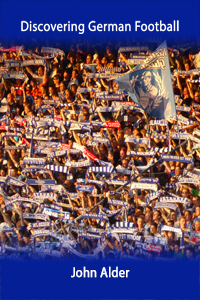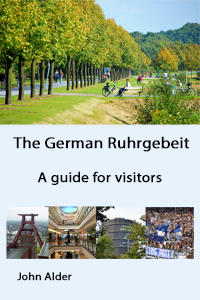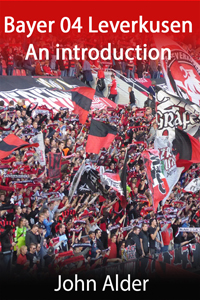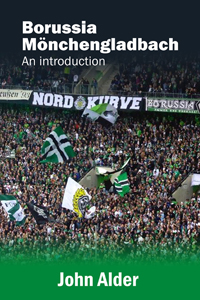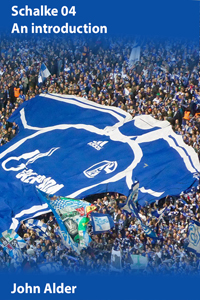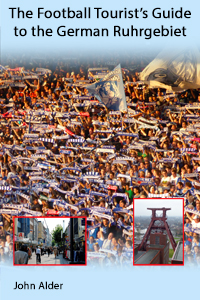FC Schalke 04: A different football experience
You will have a ticket that did not require a second mortgage to buy. You will sit or stand amongst a passionate, partisan crowd. You will hopefully see some excellent football and you will have a couple of beers and a Bratwurst. In short, you will enjoy a typical Bundesliga game.
I believe that if you are willing to take your time and if you have a little background information, you can get much more from the day. Let me be your guide to a richer Schalke experience and let me help you better understand this club, its fans, history and culture.
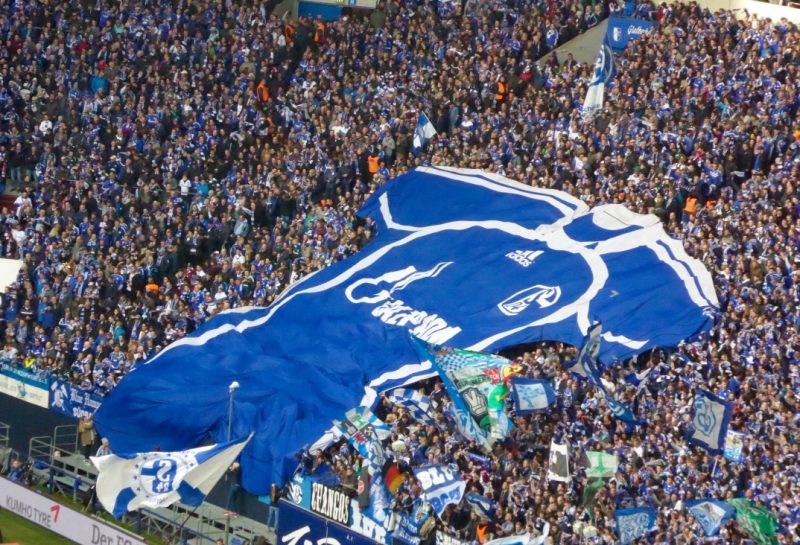
A town built on coal
A few winding towers indicate where some of the many mines used to be and isolated factory chimneys help you imagine what the skyline must have looked like 100 years ago.
Some large plants remain, but you will mainly see the reminders of what was once Germany’s industrial power house – empty plots of land that were once covered by huge factories, slag heaps converted into walking trails, abandoned railway buildings.
Get there early
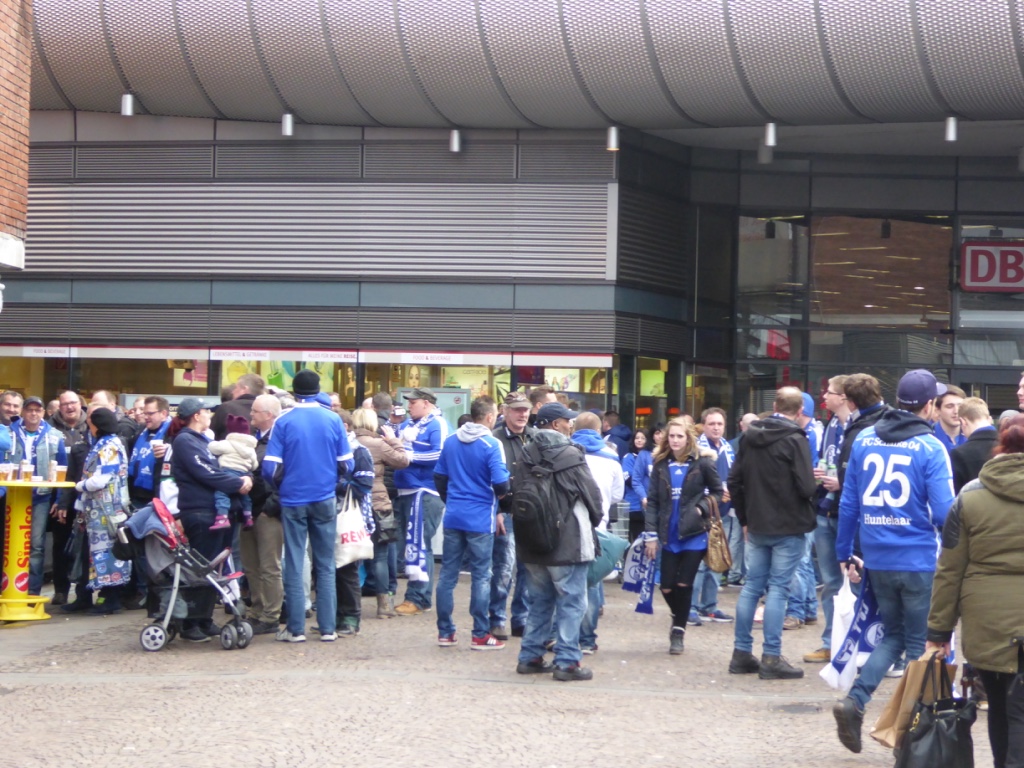
A little further from the station you go down a set of steps to catch the 301 tram towards the Veltins Arena. But don’t go all the way there straight away. Make sure you get off at a stop called Schalker Meile.
The Schalker Meile
Since those heady days, everything has changed. Thanks to de-industrialisation the district has gone into steep decline and the thriving working-class community of old is no more. The club moved three kilometres to the north many years ago – first to the Parkstadion and more recently into the shiny new Veltins Arena. But many fans still cherish Schalke’s roots. They remember that Schalke is a place as well as a club. They lament the fact that you can support the modern Schalke 04 without ever setting foot in the part of town whose name the club carries and without knowing a thing about its origins and history.
In 2006 a group of fans got together to do something about this – to make sure that this part of town and its history do not get forgotten. They wanted to create a second royal blue haven.
And so the project Schalker Meile was born. The idea was to fill a stretch of the road between the old Schalker Markt and the original Glückauf stadium – the route once walked by hundreds of thousands of fans – with as many reminders of Schalke 04 as possible.
Electricity pylons are painted in the club colours and empty shop windows are decorated with signs. The branding and advertising of local businesses all reference the club. There is even a tram stop called ‘Schalker Meile’.
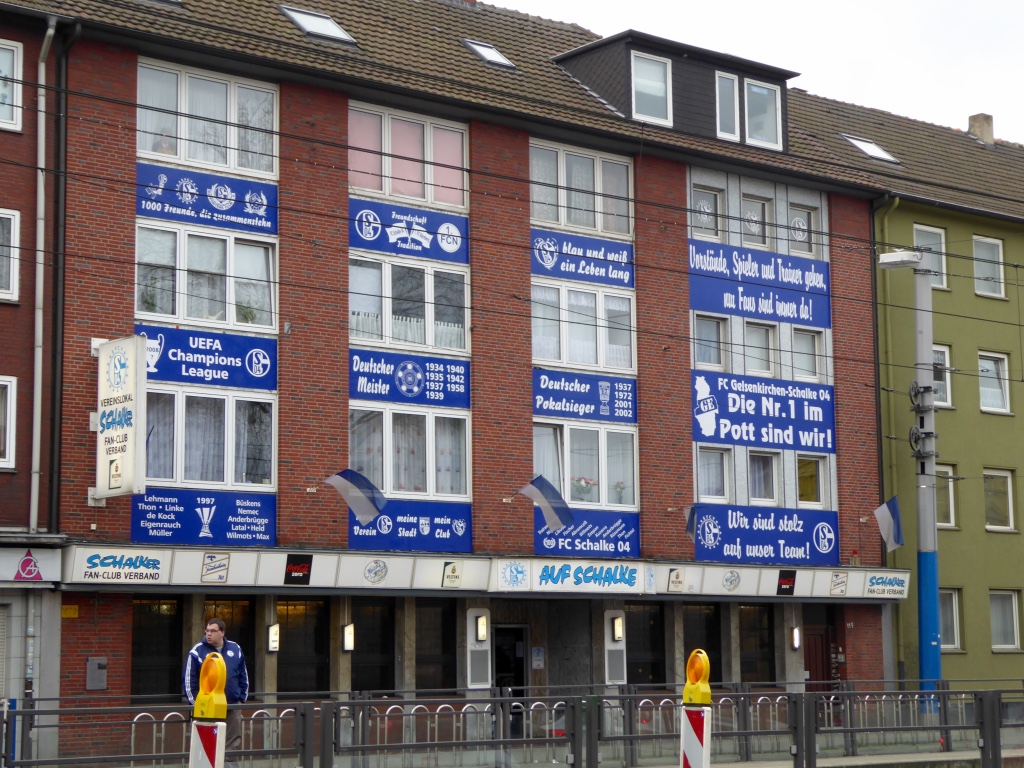
A bit further on, you pass the tobacconist shop run by former player Ernst Kuzorra until 1974when it was taken over by another Schalke legend – Reinhardt Libuda.
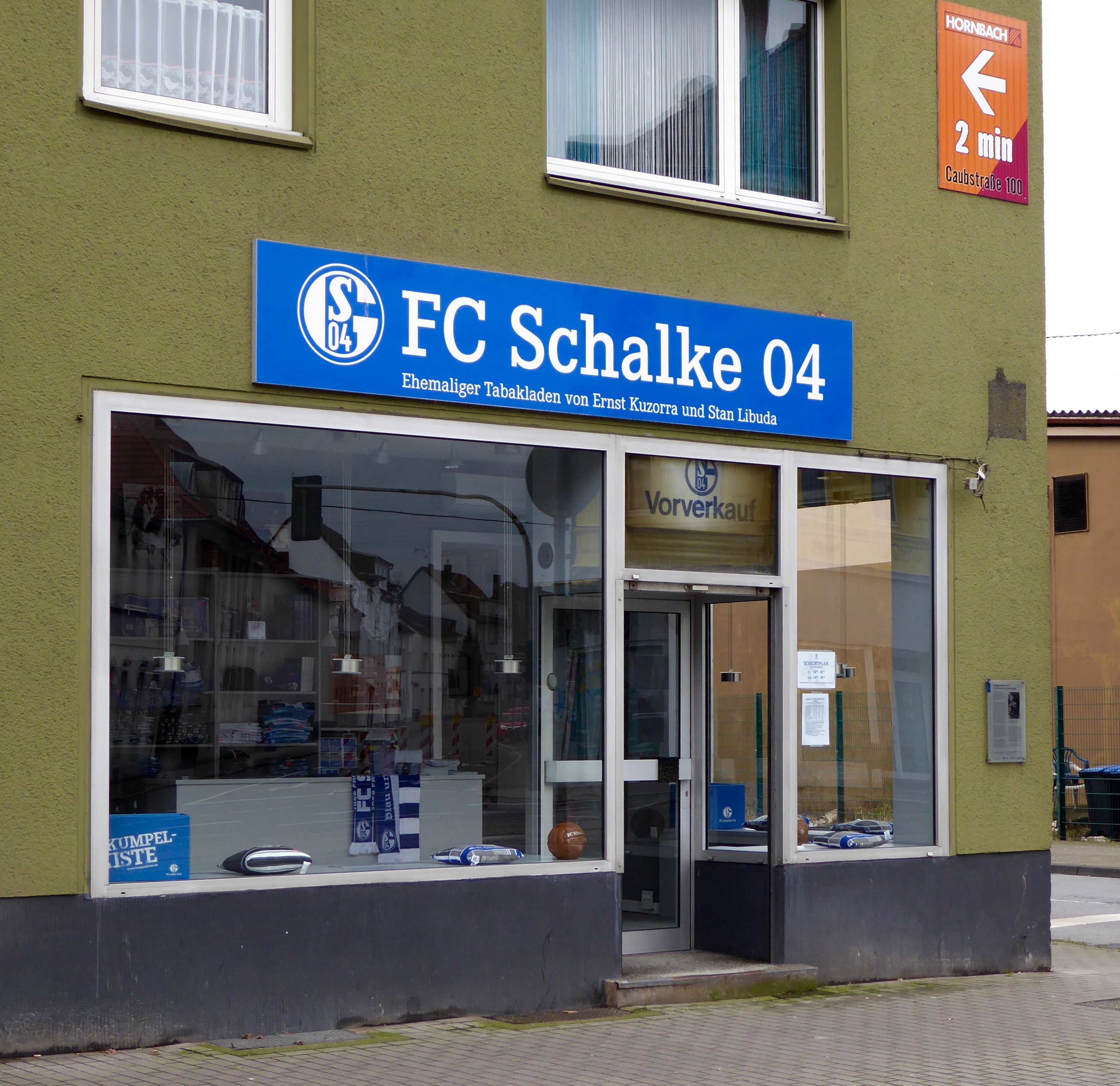
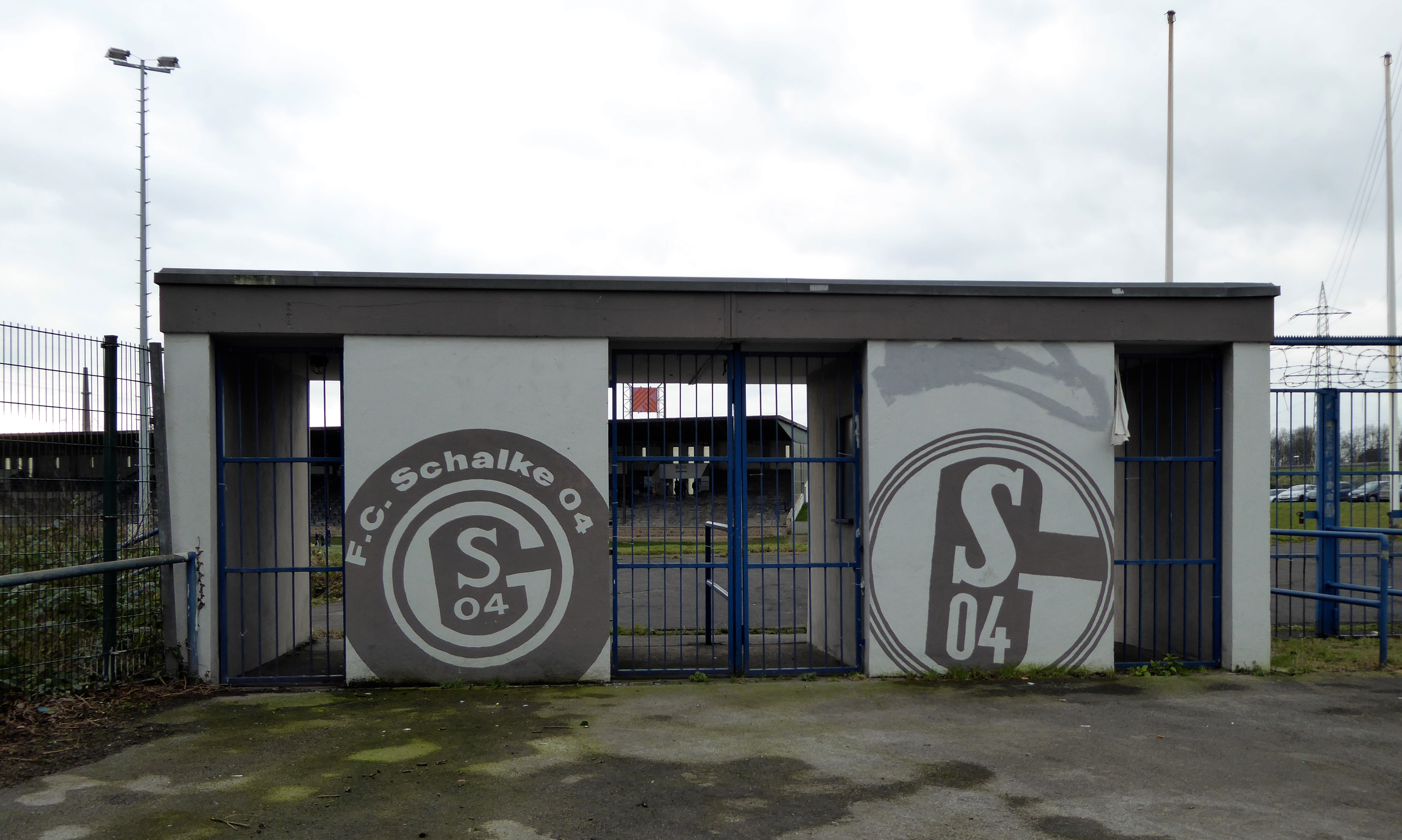
Don’t rush to get in the ground
Get off at the Veltins Arena stop and follow the flow of fans towards to ground. But don’t go
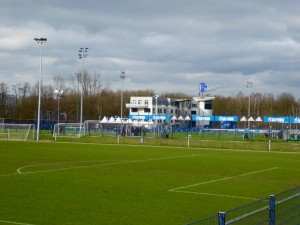 inside yet. If you have followed my advice and arrived extra early it won’t be open anyway, but even if it is, follow the pathways round to the left and walk through the training pitches. The fact that these are just open on match days for fans to wander around is remarkable in itself – but just as impressive is what is available for them. At the far side of the pitches there is a fan shop, of course, but also a huge bar with a massive outside area serving beer and sausages. The message from the club is clear – we value and welcome our fans.
inside yet. If you have followed my advice and arrived extra early it won’t be open anyway, but even if it is, follow the pathways round to the left and walk through the training pitches. The fact that these are just open on match days for fans to wander around is remarkable in itself – but just as impressive is what is available for them. At the far side of the pitches there is a fan shop, of course, but also a huge bar with a massive outside area serving beer and sausages. The message from the club is clear – we value and welcome our fans.
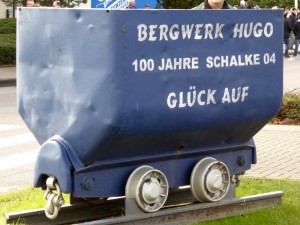
Directly opposite the shop there is a wagon used to transport coal donated by a local mine.
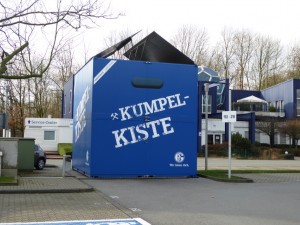
Next to it is the Kumpelkiste. This is a collection point for donations of food and clothing to be passed on to people in need. ‘Kumpel’ is slang for pal or workmate. For me the two objects reveal not only a sense of history, but also a feeling of solidarity.
The Schalke Museum
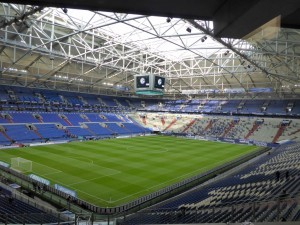 ns show footage of games from the early days until the present. And if you enjoy nothing else in the museum, I guarantee you will be blown away by the view of the stadium from here, and which justifies the 5 euro entrance fee on its own.
ns show footage of games from the early days until the present. And if you enjoy nothing else in the museum, I guarantee you will be blown away by the view of the stadium from here, and which justifies the 5 euro entrance fee on its own.
Something to eat
One thing that’s a bit 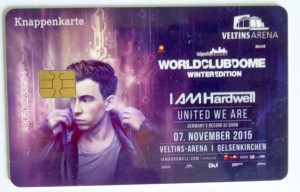 different at Schalke is that you can’t use cash. You have to go to one of the many kiosks and pick up and load a Knappenkarte. It then works just like a debit card – and if you don’t spend all the money on the card you can get it back before you leave.
different at Schalke is that you can’t use cash. You have to go to one of the many kiosks and pick up and load a Knappenkarte. It then works just like a debit card – and if you don’t spend all the money on the card you can get it back before you leave.
Refreshed and fed, it’s time to go to your seat and enjoy the crowd. Notice how full the stands are and how much noise the fans are making well before kickoff. Don’t miss the pictures and names of great former players posted high up where everyone can see them.
An emotional moment
I think that what comes next is the most magical part of the Schalke experience. Just before the teams come out the entire crowd stands up to sing a slow, sad song called the Steigerlied (the miner’s song). It almost feels like you are in church. Everyone joins in and the emotion and respect are palpable. This song is a traditional mining song about a miner about to go down to the coalface. It’s been sung here, at other local grounds, and at political meetings for decades and is basically a tribute to the brave men who risked their lives and health every day to bring up the coal which powered German industry. These were the men who founded the club. This was the background of Schalke’s players and fans. To underline the message, black and white footage of miners at work is shown on the big screen. The song starts and ends with the words ‘Glück auf’, which is a traditional miners’ greeting recognised all over Germany. The words mean something like ‘Good luck and a safe return’, but the greeting evokes memories of harder times.
The message is clear : “Schalke might be the twelfth wealthiest football club in the world and play in one of Europe’s most modern stadiums but we have not forgotten our roots.”
The anthem
A crowd in full voice
In the UK, there are quite often periods of quiet in a game. Crowds tend to shout and sing in response to the action on the pitch. In Germany this is always different – the ultras at the home end, choreographed and directed by people at the front with megaphones, make a noise from start to finish. The difference at Schalke is that there is noise for the entire game from all sides of the ground.
Songs and chants
Ein Leben lang
Blau und weiss ein Leben lang
Blaue und weiss ein Leben lang
Blaue und weiss ein Leben lang
A lifetime long
Blue and white a lifetime long …
You might also hear them singing :
FC Schalke mein verein
Ich steh immer für dich ein
Ob du gewinnst oder verlierst
Ich stehe immer hinter dir
FC Schalke my club
I will always stand up for you
Whether you win or lose
I will always be behind you
Don’t hurry home
Why not then hang around the stadium for a while, have something to eat and drink along with the thousands of others who are still there.
